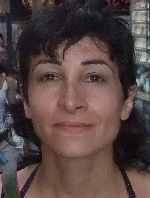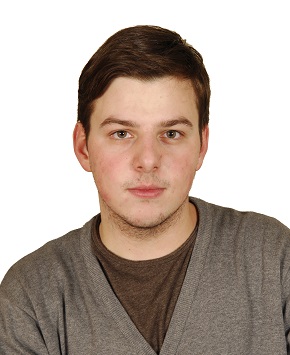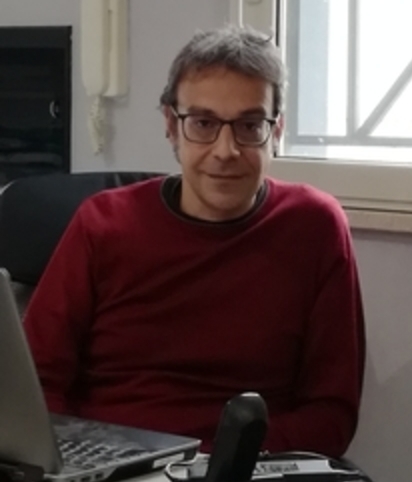ESR 5: Low-code Development of Rich Collaborative Mobile Apps using Active DSLs
Léa BrunschwigUniversidad Autόnoma de Madrid (Spain)
Objectives
Some LCDPs permit creating mobile apps. However, such apps are typically mere CRUD applications that interact with a server exchanging data collected via forms.
In order to scale the supported apps beyond simple form-based interaction, we propose a novel approach to low-code development of rich collaborative mobile apps. The resulting applications will offer interaction mechanisms based on graphical diagramming, where elements may be geolocated on maps. They will be able to incorporate information from open APIs to access services (e.g., weather), or interact with social networks. They may be context sensitive, able to adapt to changing conditions like device position, time or other conditions retrieved from APIs. They will also provide support for user roles and will enable collaboration. Examples of rich collaborative apps include those in domains of active gaming, domotics, IoT, engineering and urban planning, among many others.
Expected Results
This project proposes the use of language engineering techniques to build mobile apps, employing the novel notion of “Active DSL” developed by our team. In this approach, a domain model will be decorated with contextual rules, access control rules, graphical representation, geolocation information, collaboration approach, and external API interactions.
Deployment will be possible both on mobile devices and traditional computers. While the apps we target are currently developed using traditional programming, our approach will reduce development time from months to days, with zero programming.
Publications
-
Modelling on mobile devices. A Systematic Mapping Study. Léa Brunschwig, Esther Guerra, Juan de Lara, Jun. 2021. Software and Systems Modelling
-
Towards Domain-Specific Modelling Environments based on Augmented Reality. Léa Brunschwig, Ruben Campos-López, Esther Guerra, Juan de Lara, May 2021. 43rd International Conference on Software Engineering (ICSE 2021), New Ideas and Emerging Results (NIER 2021)
-
Towards access control for collaborative modelling apps. Léa Brunschwig, Esther Guerra, Juan de Lara, Oct. 2020. ACM/IEEE 23rd International Conference on Model Driven Engineering Languages and Systems, (Virtual Conference) (MODELS 2020)
Supervisors
-

Juan de Lara
Supervision (UAM)
-

Esther Guerra
Supervision (UAM)
Secondments
Secondment 1: Collaboration with ESR6 on repository support for active DSLs.
-

Arsene Indamutsa
ESR 6
(Univaq)
-

Davide Di Ruscio
Supervision
(Univaq)
-

Alfonso Pierantonio
Supervision
(Univaq)
Secondment 2: Collaboration with ESR4 on Requirements and Models for Active DSLs in the IoT domain.
-

Jean Felicien Ihirwe
ESR 4
(INT)
-

Silvia Mazzini
Supervision
(INT)
Will be visited by
-

Panagiotis Kourouklidis
ESR 3
(BT)
-

Alessandro Colantoni
ESR 9
(JKU)
Other ESR:
1;
2;
3;
4;
5;
6;
7;
8;
9;
10;
11;
12;
13;
14;
15;
-

Arsene Indamutsa
ESR 6 (Univaq)
-

Davide Di Ruscio
Supervision (Univaq)
-

Alfonso Pierantonio
Supervision (Univaq)
Secondment 2: Collaboration with ESR4 on Requirements and Models for Active DSLs in the IoT domain.
-

Jean Felicien Ihirwe
ESR 4
(INT)
-

Silvia Mazzini
Supervision
(INT)
Will be visited by
-

Panagiotis Kourouklidis
ESR 3
(BT)
-

Alessandro Colantoni
ESR 9
(JKU)
Other ESR:
1;
2;
3;
4;
5;
6;
7;
8;
9;
10;
11;
12;
13;
14;
15;
-

Jean Felicien Ihirwe
ESR 4 (INT)
-

Silvia Mazzini
Supervision (INT)
Will be visited by
-

Panagiotis Kourouklidis
ESR 3 (BT)
-

Alessandro Colantoni
ESR 9 (JKU)
Other ESR: 1; 2; 3; 4; 5; 6; 7; 8; 9; 10; 11; 12; 13; 14; 15;



 Contact:
Contact: